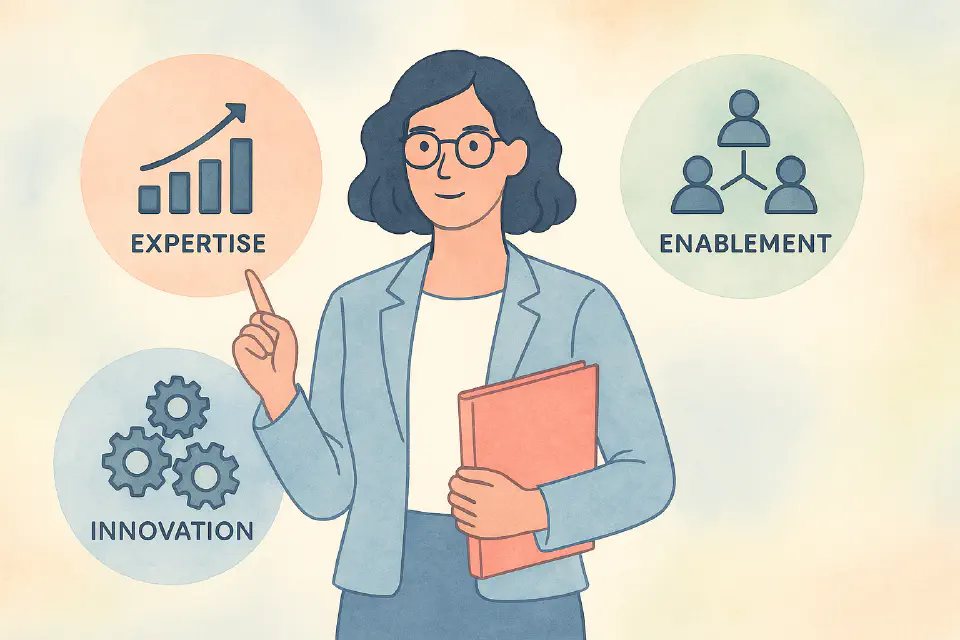
Centers of Excellence (CoEs): Design & Impact
Centers of Excellence aren't silos—they're strategy amplifiers. When designed right, CoEs create expertise that scales across the enterprise.
As HR moves toward more strategic territory, Centers of Excellence (CoEs) have become vital. They bring together expertise, standardize best practices, and help scale HR’s impact across the organization. But simply having a CoE doesn’t guarantee results. It’s the design, governance, and integration that determine success.
What Are HR CoEs?
A Center of Excellence is a small, expert team that:
- Owns a specific HR domain (e.g., talent acquisition, learning, compensation)
- Sets strategy, designs frameworks, and develops tools
- Supports HRBPs and local teams in implementation
Common HR CoEs
- Talent Acquisition
- Learning & Development
- Compensation & Benefits
- People Analytics
- Diversity, Equity, and Inclusion (DEI)
- Employee Experience / Engagement
Benefits of CoEs
Well-functioning CoEs can:
- Drive consistency in policies and tools
- Enable innovation through research and experimentation
- Reduce duplication of effort across HR teams
- Build capabilities across the enterprise
- Provide expert support to HRBPs and business leaders
Critical Success Factors
To maximize impact, CoEs must:
1. Be Embedded in the Business
CoEs shouldn’t sit in ivory towers. They must understand business priorities and design solutions that work in real contexts.
2. Collaborate with HRBPs and Shared Services
CoEs create, but don’t execute alone. Execution often happens via HRBPs (who adapt programs) or Shared Services (who operationalize them).
3. Set Standards, Not Bureaucracy
Their role is to offer frameworks—not micromanage. CoEs should empower, not bottleneck.
4. Focus on Enablement
CoEs succeed when others succeed. Their goal is to build capacity in the broader HR community, not to take credit for initiatives.
Governance and Accountability
CoEs require structured governance:
- Clear mandates
- Resource allocation tied to business priorities
- Decision rights on standards vs. customization
- Feedback loops from the field
Challenges to Watch For
- Siloed thinking
- Lack of adoption by local teams
- Over-engineering of tools that no one uses
Measuring CoE Success
Ask:
- Are business units using the tools and frameworks?
- Are we influencing people metrics (e.g., engagement, attrition)?
- Are HRBPs empowered with better resources?
- Are our programs scalable and consistent?
Final Thought
Centers of Excellence can be a cornerstone of strategic HR. But their excellence must be in service of the business—not just in title. They should own expertise, drive innovation, and enable others to succeed.